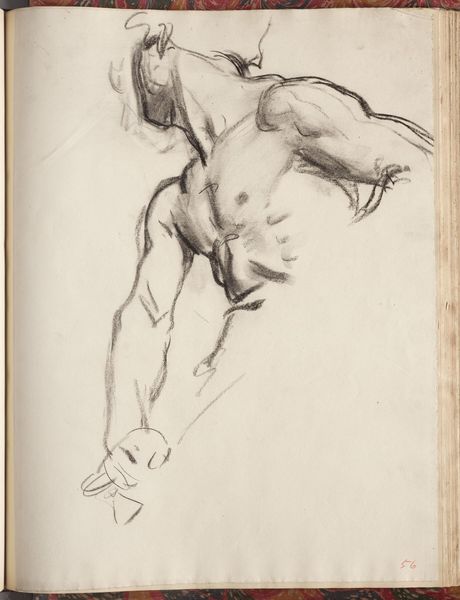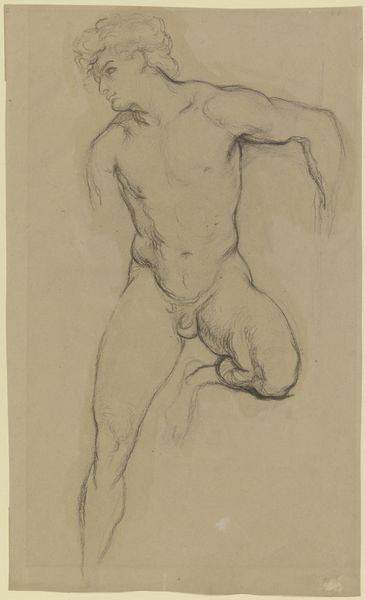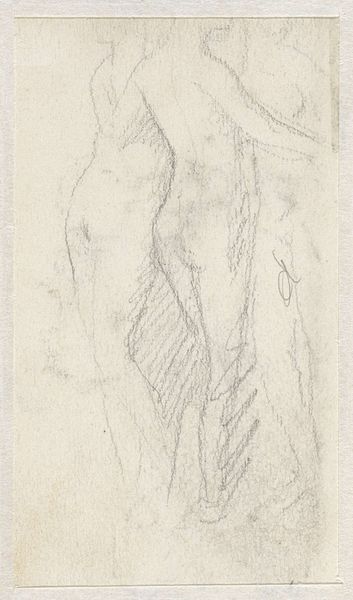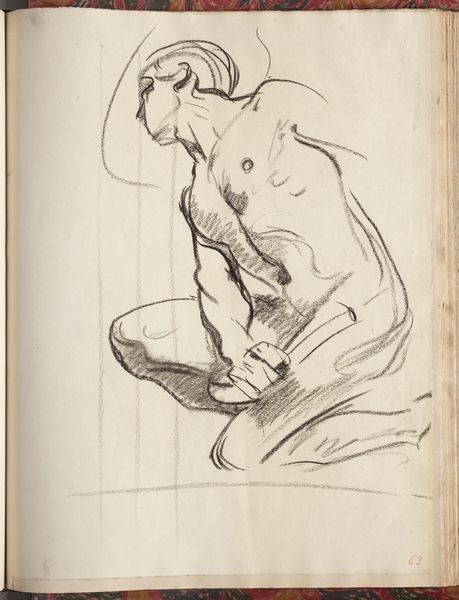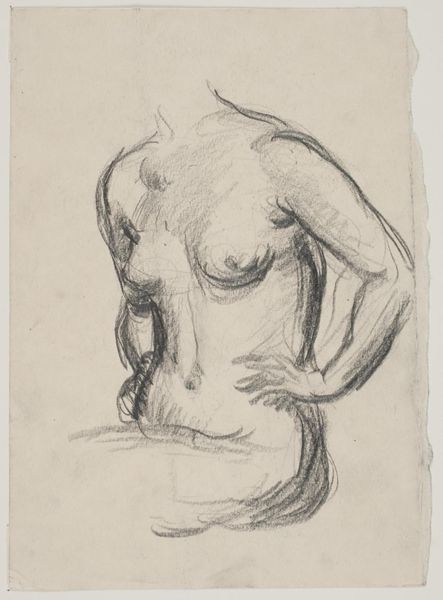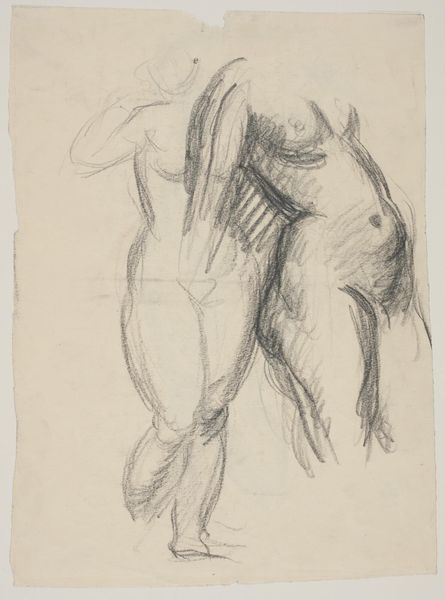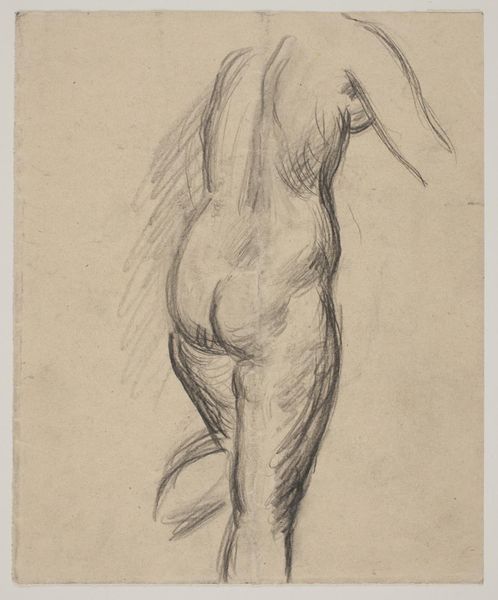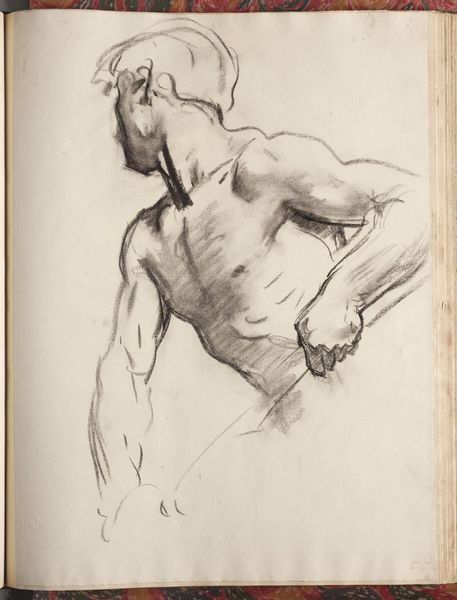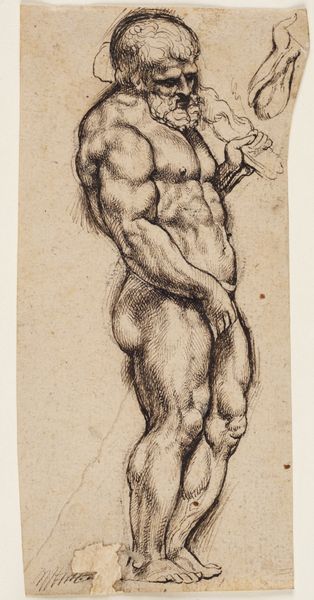
drawing, pencil
#
portrait
#
drawing
#
pencil sketch
#
classical-realism
#
figuration
#
form
#
pencil
#
academic-art
#
nude
Dimensions: height 132 mm, width 107 mm
Copyright: Rijks Museum: Open Domain
Editor: Here we have Louis Anquetin's "Torso van atleet (Hercules?)" – or "Torso of an athlete (Hercules?)" made sometime between 1871 and 1932, using pencil. There's an incredible sense of weight and strength, even though it's just a sketch. What do you see in this piece, in terms of its broader context? Curator: Well, immediately, the classical subject matter through the lens of a rapidly modernizing world jumps out. Anquetin is looking back to the heroic male form, a staple of classical art, but doing so amidst industrialization and shifting gender roles. How does idealizing this hyper-masculine figure potentially function as a response to anxieties about changing power dynamics in society? Editor: That’s a great point. The figure almost feels like a challenge or a statement. Are you suggesting that Anquetin is grappling with the changing role of men during his time? Curator: Precisely! This isn't just a study of anatomy; it's a potential assertion of traditional masculinity in an era questioning those very traditions. Consider also, the "Hercules?" in the title, positioning this powerful male nude within mythology; connecting present strength with foundational narratives. This is further supported by pencil, an accessible and reproductive medium allowing wider circulation. Is he mythologizing the male nude through a lens of classicism, nostalgia, or reaction? Editor: It’s like he's drawing a line between ancient ideals and the concerns of his contemporary world. I’m struck by the interplay between technique, subject and time. Curator: Exactly. And thinking about art and activism together allows us to view these images not as stagnant images, but rather, records of dialogue surrounding cultural values. Editor: I’ll never look at another drawing the same way! Thanks for making me think critically.
Comments
No comments
Be the first to comment and join the conversation on the ultimate creative platform.
